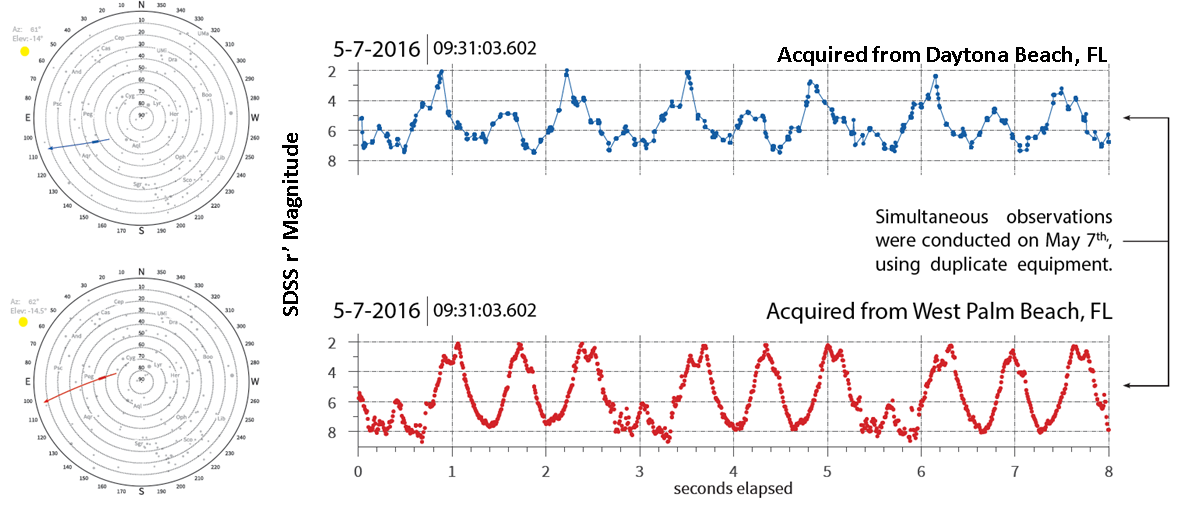Multipoint Simultaneous Observations
Hitomi was a Japanese X-ray astronomy satellite launched February 17, 2016. After only about a month in orbit, the satellite experienced an anomaly and broke up into several pieces. Shortly afterwards, the spacecraft body was optically tracked and observed from Daytona Beach, Florida using the OSCOM system, originally designed for observation of small satellites. The brightness of the main piece, peaking between magnitude 2 and 3 in the SDSS rí band, allowed photometric measurements to be made at over 100 Hz for several passes of the satellite over the span of a month.
Shown above is an 8 second duration when Hitomi was observed simultaneously from two sites 180 miles apart to provide two different look angles at the tumbling satellite. The flight path modeled in AGI STK is shown below. The data shown above is when the satellite was towards south-east from Daytona and towards east-north-east of Palm Beach. Note that as the two sites have a different look angle the overall photometry output is different, and yet the high cadence measurements show a consistent flash pattern with a primary period of about 2.6 seconds. It is concievable that such simultaneous multi-point measurements can aid in attitude determination of the resident space object if its configuration and geometry were known a-priori.
Further details of the observations can be found in AAS Summer Meeting 2016 poster.



